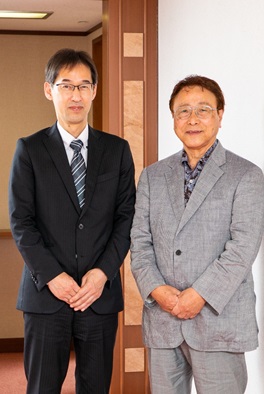Dialogue with Stakeholders
Dialogue Between Outside Directors
Fiscal 2023 is the final year of the YOKOHAMA Transformation 2023 (YX2023) Medium-Term Management Plan. We asked two outside directors about the progress of YX2023 and their evaluations of current group governance, as well as their opinions from an objective standpoint on the role that directors should play in enhancing corporate value over the medium to long term.
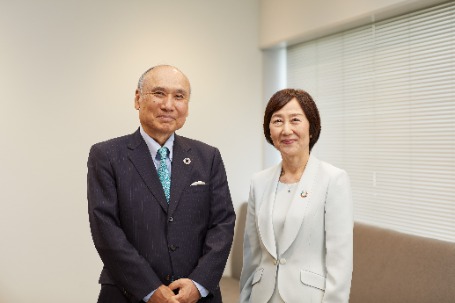
Hideichi Okada Member of the Board (Outside)
Career summary: After joining the Ministry of International Trade and Industry (currently the Ministry of Economy, Trade and Industry), Hideichi Okada served as Director-General of the Trade Policy Bureau and Vice-Minister for International Affairs.
After retiring from the government, he served as President and Chief Executive Officer of Japan Petroleum Exploration Co., Ltd. He has deep insight into social and economic conditions and overall management in Japan and overseas. Okada has been a Member of the Board (Outside) of Yokohama Rubber since 2013
Hiroko Kaneko Member of the Board (Outside)
Career summary: Hiroko Kenko was registered as a Certified Public Accountant in 1993. She previously taught and conducted research on accounting and auditing as a professor at the Faculty of Commerce at Waseda University, and has used her extensive knowledge to serve as a Director and Audit and Supervisory Committee Member at Mitsubishi HC Capital Inc., among other posts. Kaneko has been a Member of the Board (Outside) of Yokohama Rubber since 2022.
What are some of your impressions from discussions held by the Board of Directors last year?
I have served as an outside director since 2013, and during that time, the Company has made a number of major decisions, including M&A, divestitures, and relocation of the head office. In order to gain a certain share of the global market, the Company is actively taking risks while making portfolio adjustments. Many of those discussions left strong impressions on me. The acquisition of TWS was a considerable decision due to the large sum involved, but as a result, we have greatly improved our international presence, and the market has praised the move with an increase in share price.
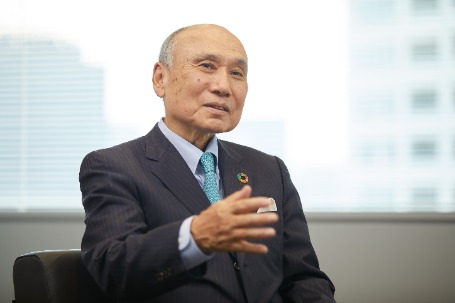
I was also impressed by the TWS acquisition. In 2022, when I was appointed as an outside director, the pros and cons of the acquisition had already been decided, but there were detailed discussions on how to proceed with the acquisition and I felt that the fact that time was also spent on discussing capital investment was a trait of the Company’s Board of Directors. What was particularly impressive was that the executive in charge of plants enthusiastically explained capital investments. He explained the necessity of investment and technical benefits in a detailed and understandable manner, and conveyed the thoughts and passion of the people on the manufacturing floor. His explanation made me aware that this enthusiasm for manufacturing contributes greatly to the growth of the Company and left a strong impression on me.
What are your thoughts on Yokohama Rubber’s challenges in terms of management or business and how do you evaluate this?
I am aware of the challenges in two respects. First of all, the Company makes management decisions very quickly, and I feel a strong sense of unity. On the other hand, from the perspective of diversity and inclusion, I think there are still not enough opportunities for female employees to play an active role at the managerial level. Society is becoming more complex and people's expectations are changing. With the integration of the head office and the Hiratsuka Factory, it will be important to take advantage of the evolution of remote technology and other factors to devise more diverse work styles. The second challenge is group governance. Yokohama Rubber is a global company with more than 60% of total sales revenue coming from overseas. In order for companies with different cultures and backgrounds to grow together, it is extremely important to find ways to have common values and corporate philosophies for the Group. This issue will become even more important as the Company continues to expand overseas and the Group grows.
I also recognize that these two points are issues for the future.
Looking ahead, I feel that it is necessary to send a message both domestically and internationally that the Company is not just a manufacturer, but also an important member of society that contributes its fair share. In addition, although related to the second issue, I believe that clarifying the social mission and vision of the Company and sharing the message within the Group will help to strengthen group governance.
This issue has already been raised by the Board of Directors. In order to strengthen global governance, we are also considering the form of internal audit and whistleblowing systems. I believe that the Board of Directors will continue to sincerely face and review these issues, which will lead to further growth and development of the Company.
When I was appointed to the Board, the number of outside directors was small and the fields in which they could make proposals to the Board more limited. Today, these fields have steadily expanded, and the number of outside directors, female directors and outside Audit and Supervisory Board members has increased. And by changing the governance structure to a Company with an Audit and Supervisory Committee, I can see the intention to change governance to a system suitable for the new Yokohama Rubber.
Governance is constantly in need of review and evolution, and there is no final destination. In particular, there are cultural differences in systems that include overseas operations, so it is necessary to firmly nurture the culture and corporate philosophy of Yokohama Rubber and share them as a centripetal force. Even if each region or division conducts business in a different way, it is important to come up with ways to ensure that the core values and philosophies are firmly shared. While delegating authority to each region, continuous efforts will be required to foster a sense of unity as Yokohama Rubber Group.
How do you evaluate the progress of the YX2023 Medium-Term Management Plan?
The TWS acquisition is a major measure in YX2023. It is unique in that the Company is emphasizing post-merger integration (PMI). During the ATG acquisition in 2016, the Company dispatched an executive vice president at the time to ensure a detailed response. I remember being deeply impressed by the Company's intention of truly uniting acquired companies and growing together with them. Today, President Yamaishi is strongly aware of the importance of PMI for the TWS acquisition and I highly commend his willingness to invest in human resources and commit the necessary funds to this process.
The reason why the Group’s strategy is progressing smoothly is that it has valued the human resources of each company. In order to grow together with the acquired company, it is essential for the head office to understand the company and cooperate with local members. In order to make good use of human capital, it is important to have appropriate personnel systems and workstyle reforms in place. It is also important to create an environment where mid-career hires and employees of different nationalities and genders can demonstrate their abilities, while increasing motivation and encouraging employees to play an active role. This will lead to the success of YX2023 and the enhancement of corporate value over the medium to long term.
What role should outside directors play in Yokohama Rubber’s efforts to achieve sustainable growth?
I believe that the most important element of the Group’s growth is human capital. An environment where employees are motivated and feel self-actualized is essential for the sustainable growth of the organization. To this end, it is important to respect diversity, provide opportunities for individuals to demonstrate their abilities, and build an environment where they can play an active role.
Even in the uncertain and complex VUCA era, companies are expected to grow steadily. I am convinced that the driving force behind growth is that all employees work together to share the culture of Yokohama Rubber and contribute to society with a strong sense of mission.
I recognize that my expected role as an outside director is to supervise the execution of directors’ duties with my expertise in accounting audits, internal control, and governance. At meetings of the Board of Directors, outside directors are expected to express their opinions from an objective perspective to provide a contrast to those of internal directors who are familiar with the Company’s business.
This division of roles contributes to the Board of Directors’ rational decision-making and clarification of issues. In recent years, “aggressive governance” has been advocated to take risks and lead to growth. I would like to support the Company while keeping an eye on the decision-making process to ensure risk management that supports sound risk-taking by management is being carried out appropriately.
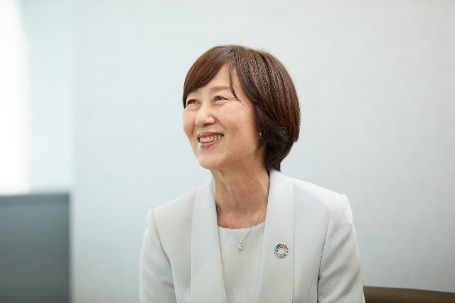
The roles of outside directors can be broadly divided into three. First, as an outsider, encourage constructive discussions and decision-making not bound by internal logic. Second, from a medium- to long-term perspective, propose the way of thinking necessary for the Company’s sustainable growth. Third, check whether management is executing business appropriately, independent of the execution side. When I worked at the Ministry of Economy, Trade and Industry, I visited some 80 countries and worked internationally, and after retiring from the government, I served as an officer of an IT company and an oil exploration and development company. In order to support the Group’s future growth, I would like to make use of these experiences to fulfill my duties as an outside director.
Dialogue with Stakeholders
The Future of the Automotive Society and Tires

Mr. Tadashi Tateuchi
Managing Director of Japan Electric Vehicle Club and Motor Journalist
Shinji Seimiya
Member of the Board and Officer, Chief Technical Officer, in charge of Corporate Quality Assurance Div., Head of Tire Development Div.
How will the automotive society, the performance required of tires and their roles change due to the widespread adoption of electric vehicles (EVs)? We invited Mr. Tadashi Tateuchi, who has been dedicated to the development of EVs in Japan for around three decades, as a guest to speak with YOKOHAMA’s chief tire technical officer.
YOKOHAMA’s Initiatives Related to the Environmental Performance of Tires
I think YOKOHAMA began pursuing environmental initiatives quite early on compared with tire manufacturers in Japan and abroad. The Japan EV Club was established in 1994. We have received support for many years up to this point for annual events such as the Japan EV Festival, a major EV racing event, since 1995, and the Japan EV Rally Hakuba in Hakuba village in Nagano Prefecture since 2014.

20th Japan EV Festival (2014)
(Photo courtesy of Japan Electric Vehicle Club, Photographer: Yasushi Miura)

3rd Japan EV Really 2016 Hakuba - Norikura - Takayama (Norikura Skyline)
(Photo courtesy of Japan Electric Vehicle Club, Photographer: Yasushi Miura)
At YOKOHAMA, we have embraced the idea of pursuing environmental performance ahead of the times as a key concept and launched the DNA Project in 1996 to develop a new core tire that would lead to improved fuel efficiency and reduce CO2 emissions. This was right about when the Japan Electric Vehicle Club was beginning its activities. At the time, we had long been focused on reducing tires’ roll resistance without compromising their gripping force. The year 1998 saw the release of the DNA series, Japan’s first fuel-efficient tire which brought those two conflicting properties into balance.
What particularly impressed me was the 2001 Electric Charging Journey made using an EV-A class. For around half a year, we charged 621 times and managed to drive around Japan. We also received support from YOKOHAMA engineers and achieved the feat after a process of trial and error.
It was the DNA dB tires that were fitted on the EV-A class. YOKOHAMA has continued to promote technological development for EVs based on the themes of harmony between the joy of driving and the environment, and R&D into tires for EVs.
In 2013, we developed the AERO-Y EV concept car and unveiled it at Tokyo Auto Salon 2013 with NAPAC. It was produced out of a desire to employ eco-friendly technologies in every aspect while offering the joy of intuitive driving to advance the growth of EV motorization. During the development process, we concentrated on reducing air resistance and adopted tire and body designs based on aerodynamics. We also combined the latest technologies from various departments that had been cultivated through the development of aerospace components and other products.
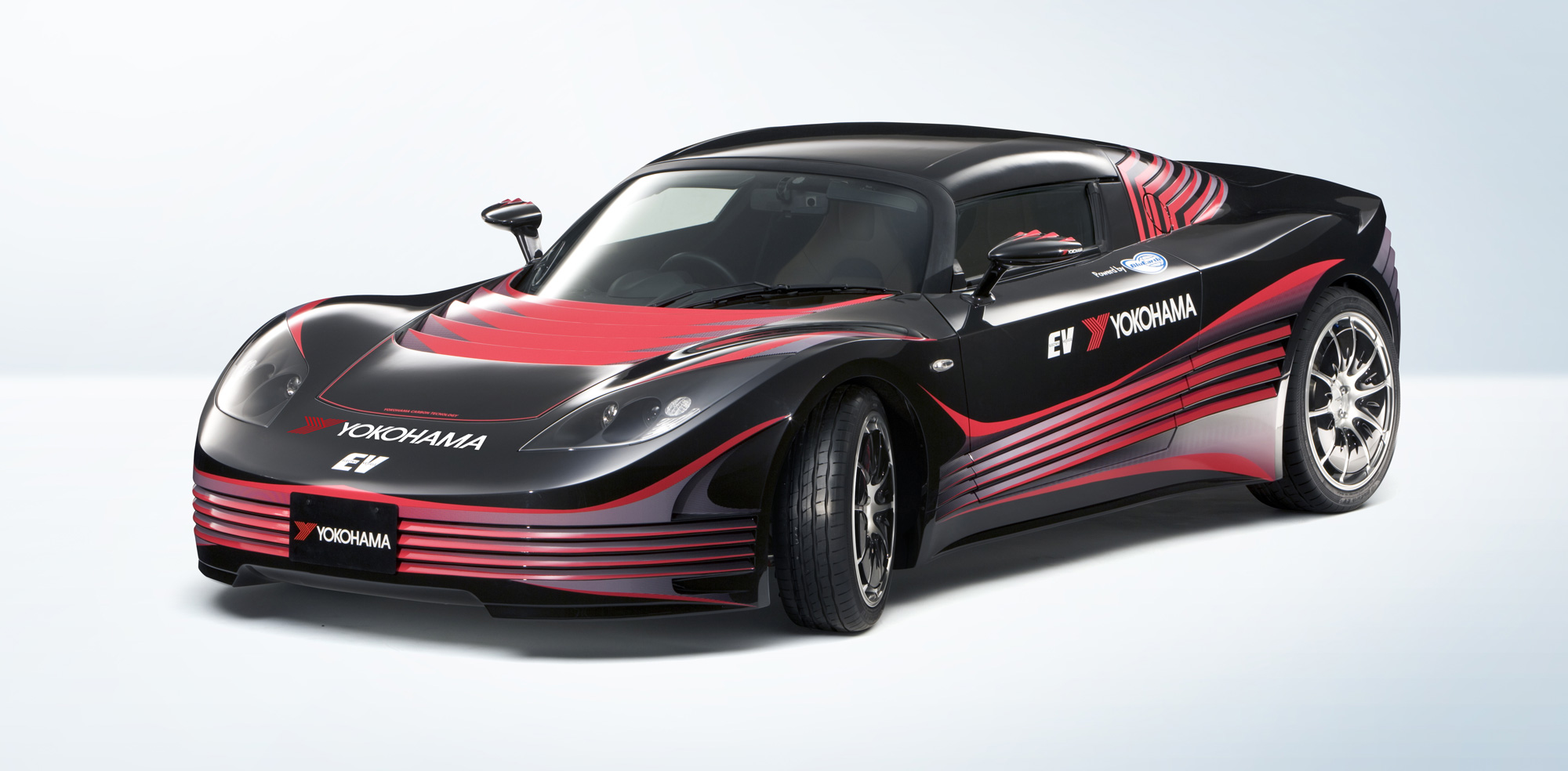
AERO-Y, the EV concept car developed in 2013
That year we took on the challenge of driving an EV around Japan only using rapid charging. It had been said that EVs will never take off because there is not a rapid charging infrastructure in place, but over the course of around two months, we covered a distance of 8,160 km with a cruising range of 80 km. This time we once again embarked on the journey with a vehicle fitted with YOKOHAMA’s eco tires.
Up until around 20 years ago, the major development themes concerning the environmental performance of tires were roll resistance and lighter weight, but now all kinds of performance metrics need to be met. The features offered by a tire don’t change dramatically just because it is equipped on an EV, but the level of requirements connected with fuel economy (cruising range) have gotten very high. Also, since EVs characteristically generate a lot of torque, the tires need to exhibit sufficient abrasion resistance to withstand those forces. There are also requirements for quietness so that the quiet running sound of an EV is not disturbed.
Generally speaking, the issue of global warming gained attention in Japan following COP3 (Third Conference of the Parties to the UN Framework Convention on Climate Change) held in Kyoto in 1998, but around this time YOKOHAMA was already pursuing R&D into improved fuel economic and low CO2 emissions, including the structure of the tires and the materials used in them. The insights accumulated during that time are connected with the products we have today.
Now DNA has been inherited by the BluEarth brand, and we are achieving even more improved environmental performance. Recently, we have also been promoting tire development in cooperation with raw material manufacturers to increase the percentage of renewable or recycled raw materials used in our products.
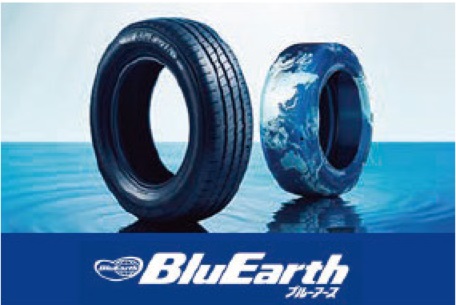
BluEarth, Yokohama tire brand
The Bond of Motorsports Bringing Us Together
I think the reason we have had such a good cooperative relationship over many years is because motorsports is rooted in our efforts. I of course love to drive, and I always wanted to learn about EVs while test driving them around a circuit. I think those things are what made us a good match.
I’m happy to hear that. Only your company would say something like that. In fact, my first encounter with YOKOHAMA dates back to the 1970s. At the time I was involved with the design of racing cars, and since our team was going to enter F2, YOKOHAMA provided the racing tires. That was the beginning of my relationship with YOKOHAMA. This was around the time that ADVAN was coming on the scene with a lot of momentum.
It’s no exaggeration to say that motorsports are the lifeblood of cars. It was my starting point. In addition, there is huge potential in cars that can be charged with electricity to drive. By organizing races with EVs, we can improve EV recognition and communicate their potential to even more people. Driving, competing and having fun are at the heart of motorsports, and I believe they fulfill an important role in people’s lives.
In the world of formula car racing, we have launched the SUPER FORMULA NEXT50 project to build a sustainable motorsports industry. Toward the goal of increasing the percentage of renewable raw materials used, YOKOHAMA is also taking on various challenges as it goes through these steps. Demonstration testing in the world of speeds exceeding 300 km/h is extremely valuable, and I think it plays a big part in moving technological development forward.
In the future, rather than testing existing things to take them to the next level, I feel that we need to discover entirely new things through motorsports. Of course, there is the problem of cost barriers to feeding those technologies back into commercial tires, but I hope the different teams can share their wisdom with each other.
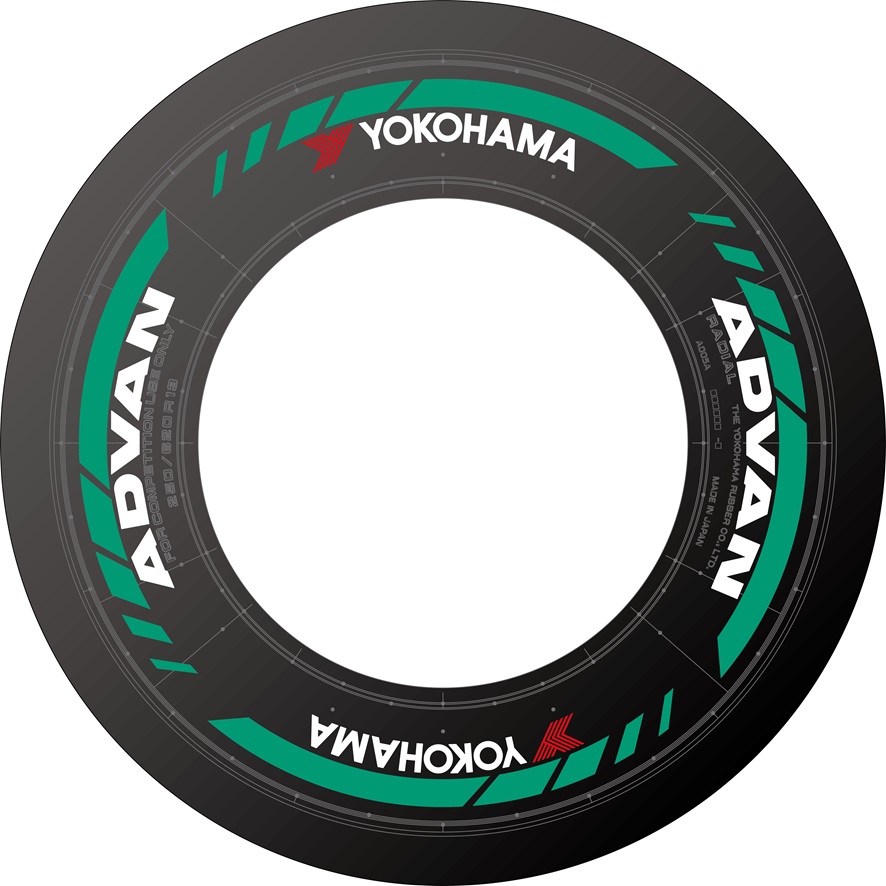
Image of racing tires with an increased ratio of sustainable materials being developed by Yokohama Rubber
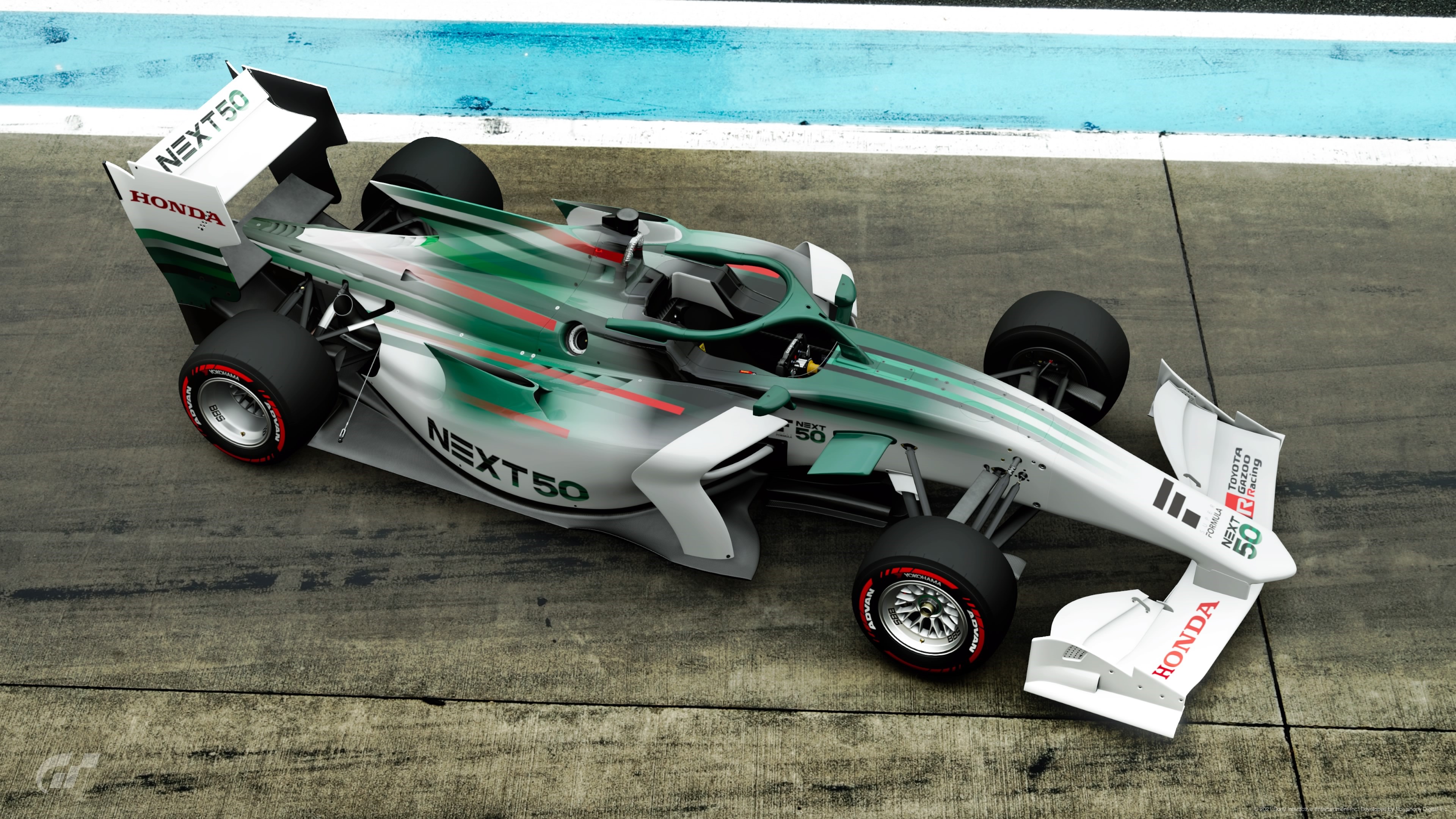
Image of SUPER FORMULA NEXT50 test car
I’m very glad that the people developing tires understand the essence of motorsports. I’m certain the tires YOKOHAMA has developed will save the world.
How Autonomous Driving and Car Sharing May Change the Role of Tires
In future society, I don’t think the phenomenon of vehicles driving through town will change that much, but due to autonomous driving, I think the concept of operating a vehicle may change. I also think the concept of owning a car may change due to car sharing. The terms “driving” and “family car” could become things of the past. Under such circumstances, can you imagine how tires may change?
If autonomous driving and car sharing become widely adopted, I think tires for passenger vehicles will shift to being used like commercial tires in a sense. The elements of enjoyment with respect to tires would be reduced, but on the other hand, there would be needs for maintenance-free operation and sensing technologies, and that could lead to the development of tires based on data that has never been available until now. However, I still think there will continue to be users who own cars and who want to savor the joy of driving.
Those who operate vehicles in the future may be part of a privileged class. Those who drive on circuits could be a class of particularly lucky people. My personal view is that a society that loses the desire to move around will end in ruin. I think we must not lose the sense of excitement that comes from moving around. Even so, tires will continue to be an integral component of vehicles. I believe that no matter how much cars change, shock absorbers, brakes and tires will be the three aspects that survive.
In terms of commercial tires, even in the world of trucks and buses, the shift to EVs has advanced, and commercial tires will continue to change to respond to needs for improved fuel economy and environmental performance.
Expectations of YOKOHAMA
Due to the COVID-19 pandemic, YOKOHAMA has also introduced remote work practices, but when it comes to manufacturing, it is important to see, touch and experience things in the field, and I think it is important to find a balance in working styles.
There’s nothing like touching a car or tires. In the Let’s Drive Electric Formula Cars!, EV classes for junior high school students run by the Japan Electric Vehicle Club, we disassemble and assemble two-passenger electric formula cars and test drive them on a circuit as part of hands-on classes. There are high barriers to doing this with an engine-powered car, but motor-driven cars are comparatively simple. How does YOKOHAMA feel about creating a sports EV?

EV SIDE by SIDE, two-passenger electric formula car (2007 / Vehicle created in EV class for junior high school students)
(Photo courtesy of Japan Electric Vehicle Club, Photographer: Yasushi Miura)
You mean creating a production car rather than a concept car?
The only manufacturer I know that is this passionate about energy and environmental issues related to cars is YOKOHAMA. In the future, it will be possible to create EVs without a factory, even for companies that are not traditional auto makers. By developing a sports EV equipped with ultra-high performance eco tires, you could challenge the eco-car category at the 24 Hours of Le Mans. I think it could spark dreams and courage in many children.
So you’re saying we should be looking that far ahead in our work. As someone involved with cars, I feel that there is a great deal of potential in EVs, so that prospect is something I want to think positively about.
